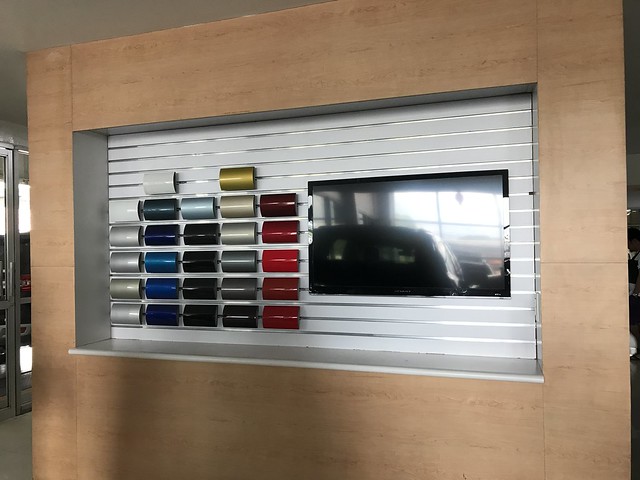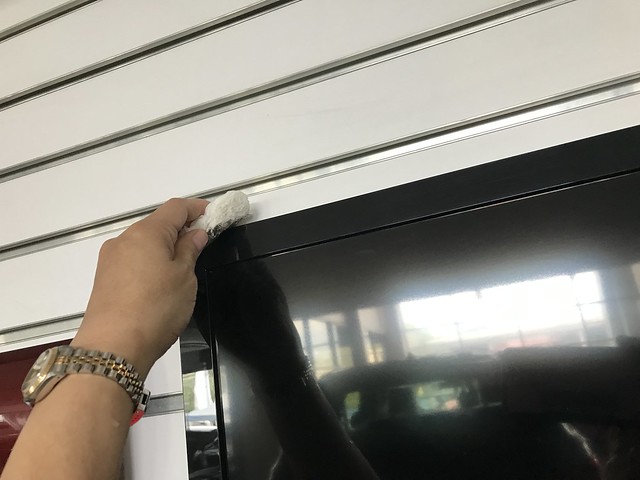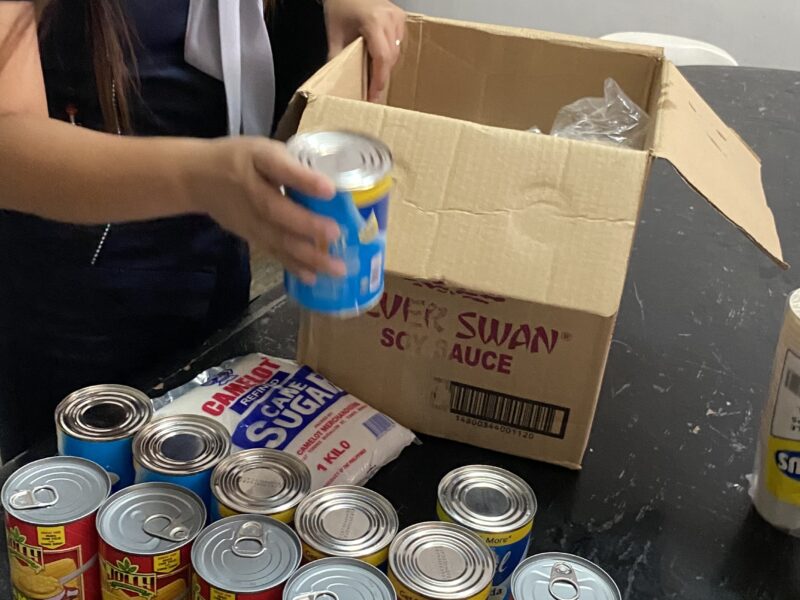March 5, 2019
I made a quick visit to Ford Cainta. They have a new male showroom cleaner, just 3 days, and he didn’t know yet what to do. He has a good personality, always smiling while I was giving him instructions.
This color swatches display looked clean but when I ran my finger in between the ridges, hayan na ang alikabok.

Grabe ang alikabok kahit saan. We, Metro Manilenyos, inhale dust day and night even when we are inside our homes.

And look at this pretty showroom. Red is more stunning than blue. Red is my 2019 color. This is a perfect match with my red and white handbag.

A bit of history:
Cainta was founded between August 15, 1571, and November 30, 1571. It was named after a rich woman named Jacinta. Her boyfriend died from illness and she never married.
She was generous to the residents who fondly called her Ka Inta.
Making native delicacies was the town’s major source of income for four hundred years. Cainta was known as the Bibingka Capital of the Philippines.
I grew up knowing Cainta as the source of delicious kakanin. Every Sunday morning, a couple with dark skin and curly hairs came to the town market to sell different kinds of delicacies. My mom ordered ube halaya from them usually a week before the town fiesta. They would deliver the halaya shaped like a flat fish and meticulously wrapped in banana leaves.
Because the kakanin vendors’ skin was darker than ordinary, people from Binangonan used this as a reference in their daily conversations. “Ang itim mo, para kang tiga-Cainta.” “Tiga Cainta siguro yan, ang itim”. They made fun of the color of the skin.



